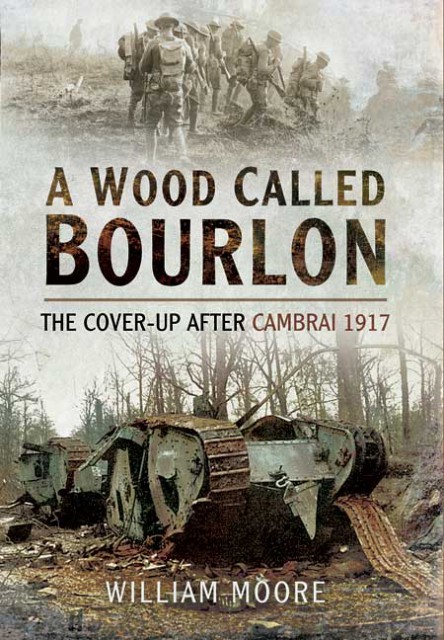This is another re-published work. William Moore’s book about Bourlon Wood first hit the shelves in 1988 and it seeks to discuss the so-called ‘cover-up’ that came about after the Battle of Cambrai. The battle was fought in the dying days of 1917 and initially it appeared to have been a great success for the BEF. Swathes of territory was taken, prisoners captured in their hundreds, tanks proved their worthand bells pealed to signal the great victory. Then the German Army nullified the victory in a brilliant counter-attack. Cambraiswiftly became a failure and was a blow to Allied morale made even worse because it came close on the heels of Passchendaele, the Nivelle Offensive and Arras. In fact 1917 had been a terrible time for the Allies, with only Vimy Ridge standing out as the victory of the year. As for Cambrai, there were questions asked in the House and at GHQ. There was also an Inquiry.
What were the causes of failure? Who ordered that the bells should be rung…? There was a Despatch published for public consumption. What went wrong? Which division broke? Which units fled the field? I would say that the truth is, and there was not a cover up about this fact, the German Army did what it had to do and was very good at; it counter-attacked and won back lost ground. The Despatch was for public consumption and that it was “at best plausible” is hardly surprising. As Moore points out and I agree, there was a war on; just how much operational data about failure in battle was a high command and a sovereign government likely to give to the enemy?
The book lacks some discipline and on occasion it comes close to being a general history of the wood. Delving as far back as 1660, tacking on the final capture of the Wood in 1918 and drifting in to the 1940s is all needless given the book’s title. Personally I like the chapter headings in books to act as sign posts within the text that tell the reader where things are going, or at least what each chapter is about. Chapter headings such as, “A Malicious Dwarf,” “Greenhouse in a Storm,” and “Grumbling Appendix” do not lead me to conclude that I am about to read about the Great War; even if there is a re-touched picture of wrecked tanks on the front cover. When researching it is good to be able to dip into chapters and gather relevant information without having to wade through ephemera.
The subject is worthy of research and discussion.Moore’s book takes the reader into the world where senior military figures and politicians met, clashed and intrigued. It was a highly charged time for the ‘Brass Hats’ and ‘Frock Coats’, Lloyd George and Haig were not on the best of terms and after 1917 the former was seeking ways of curbing the operations of the latter.Good on William Moore for writing this book;the conflict between the politicians and soldiers on both sides in the Great War is a subject area that still fascinates and that needs much more research and work.
Reviewed by Dr. Wayne Osborne for War History Online.
A WOOD CALLED BOURLON
The Cover Up After Cambrai 1917.
By William Moore.
First Published by Leo Cooper Ltd, 1988. This edition published by Pen & Sword, 2014.
ISBN 978 1 47382 126 2

